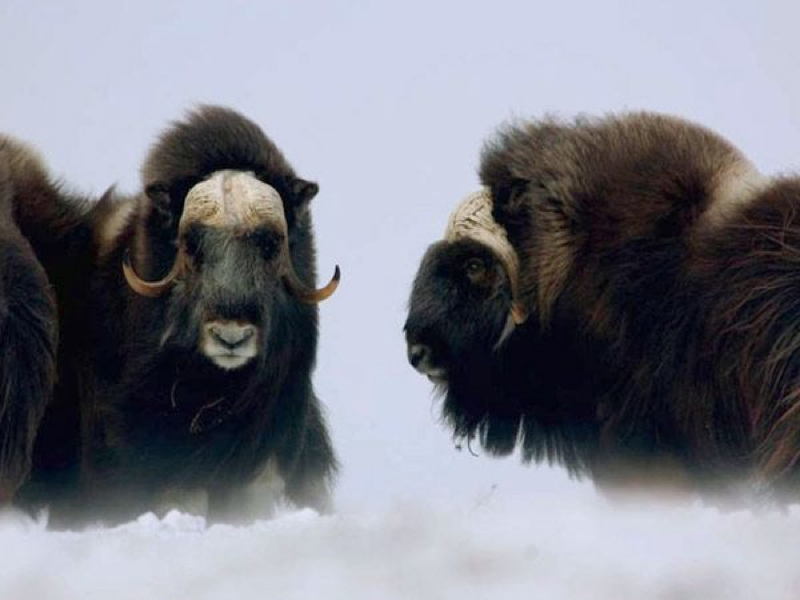Adaptations of Arctic Animals

Arctic animals have developed a range of adaptations to survive in the extreme cold of their habitat. One key adaptation is the growth of 'winter coats' which consist of layers of fat, underfur or down feathers, and water-repellent guard hairs or feathers. These natural barriers trap body heat and provide insulation, allowing animals like polar bears to keep warm in subzero temperatures[2].
In addition to thick fur, many Arctic animals have behavioral adaptations that help them thrive in the harsh conditions. For example, diving for food is a common practice among Arctic animals like seals, whales, and Arctic birds. These animals have evolved to survive in the dark waters and freezing temperatures of the Arctic environment[5].
Specifically, animals like polar bears have unique adaptations like the evolution from grizzly bears, two layers of insulating fur, and strong swimming abilities. Similarly, caribou utilize antlers for feeding rights and muskoxen have a layering system of qiviut and guard hairs for insulation, fat reserves for heat generation, and reinforced skulls with horns for protection[3].

Arctic animals also possess features like small ears, tails, webbed feet for swimming efficiency, and camouflage to blend with the snowy environment. These adaptations are crucial for animals like polar bears, Arctic foxes, and beluga whales to thrive in the Arctic region[4].
Moreover, genetic differences related to nitric oxide production play a role in energy metabolism and heat production, enabling animals like polar bears to generate heat instead of energy to stay warm in cold environments. This adaptation is essential for survival in the extreme Arctic conditions[10].

Arctic animals have developed thick layers of blubber, dense fur, and specialized body features like wide hoofs, small ears, and compact bodies to minimize heat loss. Additionally, adaptations like hibernation, migration, and social structures help Arctic animals cope with the extreme conditions[1].
Blubber is a crucial adaptation that provides insulation and warmth for Arctic animals. It helps them stay warm by providing a layer of fat that retains heat. Additionally, huddling together and other behaviors contribute to the survival of Arctic animals in subzero temperatures[8].
Arctic foxes, for example, have several adaptations like a thick fur coat, long tails that act as blankets, fur on their feet for snow protection, and white coats for camouflage. These adaptations help them navigate the harsh Arctic conditions effectively[13].

Arctic animals like walruses possess large tusks for various tasks, while Arctic cod have antifreeze proteins to prevent ice crystal formation in their blood. These adaptations help them survive in the harsh Arctic environment[11].

In conclusion, Arctic animals have evolved a variety of physical, behavioral, and physiological adaptations to thrive in the extreme cold of the Arctic region. These adaptations, ranging from thick fur and blubber to specialized body features and genetic differences, enable animals to survive and thrive in one of the most challenging environments on Earth.
Get more accurate answers with Super Pandi, upload files, personalized discovery feed, save searches and contribute to the PandiPedia.
Let's look at alternatives:
- Modify the query.
- Start a new thread.
- Remove sources (if manually added).